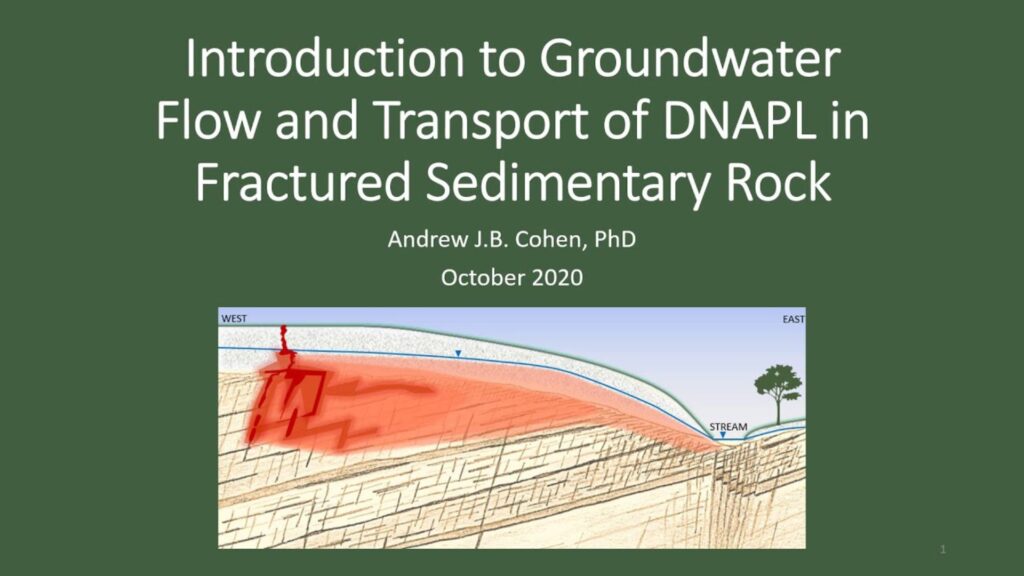This webinar excerpt explores how contaminants migrate through fractured bedrock aquifers, a critical and complex aspect of hydrogeology. Unlike groundwater flow in unconsolidated materials (such as sand and gravel), fractured rock environments create highly variable and unpredictable pathways for contamination.
The video examines a cross-section of fractured sandstone and siltstone, highlighting key hydrogeologic processes, including:
- Groundwater Flow in Fractured Rock – Water moves through vertical and horizontal fractures, following tortuous and discontinuous pathways rather than a uniform direction.
- Preferential Flow Paths – Some fractures create high-permeability channels, allowing groundwater to move much faster than in typical porous materials.
- Dense Non-Aqueous Phase Liquid (DNAPL) – Heavy contaminants, such as trichloroethylene (TCE), can sink below the water table, becoming trapped in rock fractures.
- Dissolution and Contaminant Transport – Contaminants dissolve from trapped liquid sources into groundwater, forming plumes that migrate and spread over time.
- Matrix Diffusion – A key process where contaminants diffuse into and out of the surrounding rock matrix, prolonging contamination long after the initial release.
- Plume Commingling – How plumes from different sources interact within the fractured rock system, making site investigations and remediation more complex.
This video provides a detailed conceptual framework for understanding hazardous waste migration in fractured rock and its implications for site remediation, environmental assessments, and groundwater modeling. It is particularly relevant for geologists, environmental engineers, and professionals involved in contaminant hydrogeology.
This video is an excerpt from the seminar “Introduction to Groundwater Contamination”, presented to the UC Berkeley Department of Civil and Environmental Engineering in September 2021.

